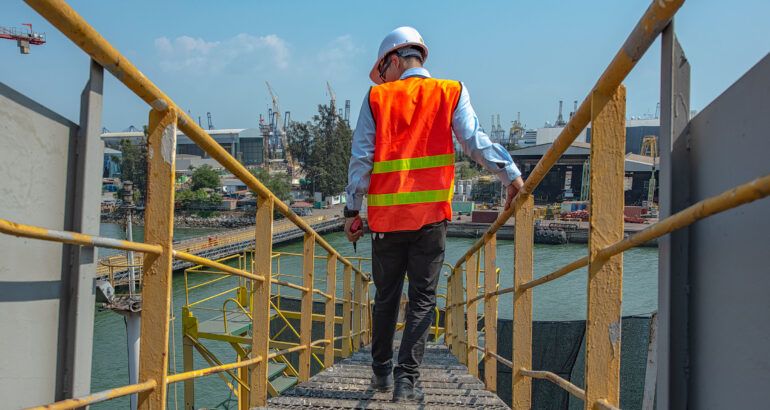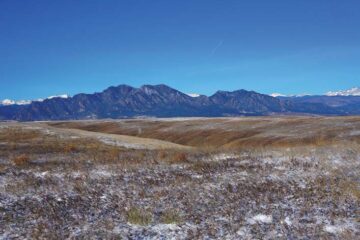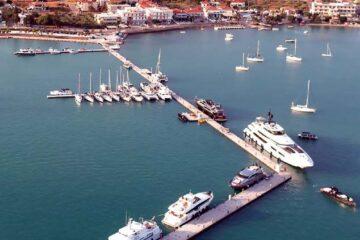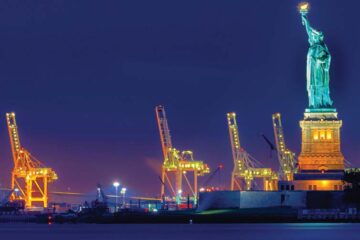The Setting
Two warehouse employees are working on a bulk conveyor at a maritime facility that ships a variety of fertilizers and other bulk products. The conveyor is used to transfer fertilizer from a barge to the warehouse. The employees are preparing the conveyor product belt for the unloading operation, and are in the process of relocating the “tripper” device to a different location. The “tripper” is a part of the belt system that forces product off the belt, dumping it into the bin below. The employees access the tripper from a catwalk, which runs along the ceiling of the warehouse about 35 feet above the concrete floor.
The Accident
At the time of the incident, one of the two employees left the catwalk and was on the ground controlling power to the belt. The other employee remained on the catwalk and was attempting to jog the tripper into its final position when the floor of the catwalk collapsed beneath him.
He died after falling through the floor of the catwalk, striking the concrete floor 35 feet below.
What went wrong?
The incident occurred because of severe corrosion to the catwalk. The catwalk had previously shown significant signs of failure, including bending and breaking, in the exact location as the failure leading to the fatality. Other sections of the walkway had either fallen out or given way for at least two years prior to the incident. An analysis of the broken section of the catwalk indicated that the structure was entirely composed of corrosion products. In addition to the corrosion of the catwalk, some sections of the building were found to be in imminent danger of collapse. Other safety hazards were noted at the facility which included operating heavy equipment with defective brakes, employee exposure to impact from moving rail cars, operating a crane without training in hand signals, and unguarded belt drives. The employer also assigned workers to make repairs to a structurally unsound roof without providing the workers with adequate fall protection. Furthermore, there were no guardrails on the walkway leading to the catwalk from the rail car loading area. The walkway crossed over a conveyor and exposed workers to falls of more than 16 feet.
This hazard could have been prevented if the employer had ensured that the catwalk was structurally sound and capable of supporting its design loading. In addition, the employer should have conducted routine inspections of the catwalk, including welds and bracing members. The employer should have repaired or replaced the defective sections and should have prevented access to the walkway until proper inspections and repairs could be completed.
Employees should have been trained to be aware of the hazards of catwalks, especially in the presence of corrosive materials, to observe catwalk conditions, and to report any defects to management immediately.
The corrosive action of fertilizers on surrounding structures is a recognized hazard in this industry. Standard engineering practice is to design the structures storing such materials out of corrosion-resistant materials such as concrete and fiberglass.
There were no guardrails on the walkway leading to the catwalk from the rail car loading area. The walkway crossed over a conveyor and exposed workers to falls of more than 16 feet. Although corrosion of the catwalk was the primary cause of the fatality, the lack of guardrails also exposed employees to a fall hazard. Installing guardrails on the walkway leading to the catwalk, in accordance with the above standards could prevent these accidents.









